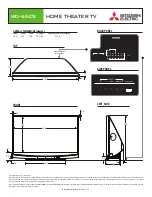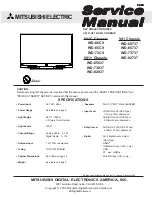
Installation and Commissioning
7-4
7SS60 Manual
E50417-G1176-C132-A1
Auxiliary voltage
Both the 7TM70 restraint/command output module and the 7TS720 command output
module have three input voltage ranges for the auxiliary voltage: 48/60 Vdc, 110/
125 Vdc and 220/250 Vdc (refer to Chapter 9 and Appendix A.5). The voltage range
can be selected by changing the jumper settings on the module. The assignment of
the jumpers to the rated voltage levels, and their location on the p.c.b., is shown in fig-
ures A-6 and A-8. Before mounting the peripheral module, check whether the selected
auxiliary voltage matches the substation conditions.
Relay contacts
(NC/NO contacts)
On the 7TR71 preferential treatment/isolator replica module some of the relay con-
tacts can be set either as NC or NO contacts. The relay contacts must be matched to
the configurations. The assignment of the jumpers to the respective functions is shown
in the block diagram A.3. The physical location of the jumpers on the p.c.b. is shown
in Figure A-7.
q
Insert the peripheral modules into their slots and secure them with a screw from the
back of the housing. The slots are numbered and color-coded, refer to Figure 2-4.
q
The peripheral modules are identified by a labelling strip on which the current con-
figuration is stated. The configuration information should contain the designation of
the peripheral modules in accordance with their mounting position, and their voltage
ranges. Each peripheral module housing has a rating sticker that should be placed
on the top of the housing after installing the peripheral modules.
q
Make electrical connections via the screw-type connection modules. Special atten-
tion has to paid to the designations of the connection modules, the permissible con-
ductor cross-sections and tightening torques (refer also to chapter 2). Use copper
conductors only!
q
Replace the front cover on the housing.
q
Re-insert the covers.
Note:
As the plug-on connectors and pins of the different peripheral modules are not coded,
the plug-on connectors must be marked to make their allocation to the appropriate pin
connectors on the peripheral modules possible. The marking system for this is shown
in Figure 2-2. The marking should contain the following information:
•
Number of the peripheral module housing
•
Slot identification (A, B, C, D) of the module
•
Top connector (X1) or bottom connector (X2)
•
Terminals on the connector (1-10, 11-20, 21-30, 31-40)
Summary of Contents for SIPROTEC 7SS60
Page 1: ...E50417 G1176 C132 A2 SIEMENS SIPROTEC 7SS60 V3 1 Centralized Numerical Busbar Protection ...
Page 2: ......
Page 4: ...Siemens Aktiengesellschaft Document No E50417 G1176 C132 A2 ...
Page 8: ...Preface iv 7SS60 Manual E50417 G1176 C132 A2 ...
Page 50: ...Configuration 4 16 7SS60 Manual E50417 G1176 C132 A2 ...
Page 80: ...Control in Operation 6 8 7SS60 Manual E50417 G1176 C132 A2 ...
Page 112: ...Technical Data 9 18 7SS60 Manual E50417 G1176 C132 A2 ...















































